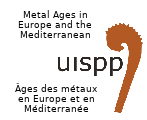The protohistoric site of La Tabla de Las Cañas (Capilla, Badajoz) was originally situated on a hill by the Zújar River – a tributary of the Guadiana River; nowadays, it is located within the flooding area of La Serena reservoir. The recent droughts, attributed to climate change, have caused the site to emerge once again, although it is uncertain how long this will last. Beyond the historical and cultural information that this site can provide us, La Tabla de Las Cañas presents a unique opportunity to study how periodic flooding affects the preservation of archaeological heritage. This allows us to assess the vulnerability of such heritage and the evolution of its degradation. Moreover, it offers unique research opportunities as its natural exposure has partially revealed the layout of the site (its dwellings, streets, walls, etc.). However, due to erosion and degradation during this process, it is crucial to gather all possible information before the site is submerged again. Combining data obtained through archaeological surface surveys using centimeter-precision GPS and photogrammetry from planned drone flights, we propose a methodology to document the heritage unearthed by the reservoir's natural action. This method also aims to periodically monitor its degradation, facilitating the study of the vulnerability of this particular type of archaeological heritage.

 PDF version
PDF version
